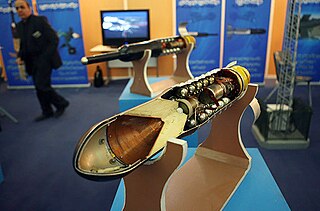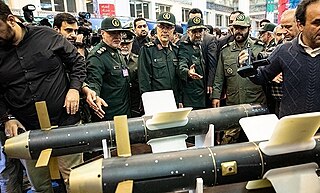
An unmanned combat aerial vehicle (UCAV), also known as a combat drone, colloquially shortened as drone or battlefield UAV, is an unmanned aerial vehicle (UAV) that is used for intelligence, surveillance, target acquisition, and reconnaissance and carries aircraft ordnance such as missiles, ATGMs, and/or bombs in hardpoints for drone strikes. These drones are usually under real-time human control, with varying levels of autonomy. Unlike unmanned surveillance and reconnaissance aerial vehicles, UCAVs are used for both drone strikes and battlefield intelligence.

Stealth aircraft are designed to avoid detection using a variety of technologies that reduce reflection/emission of radar, infrared, visible light, radio frequency (RF) spectrum, and audio, collectively known as stealth technology. The F-117 Nighthawk was the first operational aircraft specifically designed around stealth technology. Other examples of stealth aircraft include the B-2 Spirit, the F-22 Raptor, the F-35 Lightning II, the Chengdu J-20, and the Sukhoi Su-57.
The history of unmanned combat aerial vehicles (UCAVs) is closely tied to the general history of unmanned aerial vehicles (UAVs).

The HESA Ababil is an Iranian single-engine multirole tactical unmanned aerial vehicle manufactured by Iran Aircraft Manufacturing Industrial Company (HESA). The Ababil comes in two main lines, the Ababil-2 and the Ababil-3, of which the former has a number of variants. It is considered a long-range, low-technology drone.

The Qods Mohajer is an Iranian single-engine tactical unmanned aerial vehicle (UAV) built by the Qods Aviation Industry Company in four main variants from the 1980s to the present day. The Mohajer family is primarily used for reconnaissance, and is among the most mature and well-known Iranian UAVs.

The Saegheh refers to at least six completely separate Iranian weapons systems: a RPG warhead, an anti-tank guided missile family, a surface-to-surface rocket, a target drone family, an air-to-air missile and a claimed stealth Unmanned aerial vehicle.

The Lockheed Martin RQ-170 Sentinel is an American unmanned aerial vehicle (UAV) developed by Lockheed Martin and operated by the United States Air Force (USAF) for the Central Intelligence Agency (CIA). While the USAF has released few details on the UAV's design or capabilities, defense analysts believe that it is a stealth aircraft fitted with aerial reconnaissance equipment. Introduced in 2007, it has been deployed to Afghanistan in late 2007, and to South Korea two years later, in September 2009. Some images and details of the aircraft were released after Iran captured an RQ-170 in 2011. It has a flying wing design, and uses a single engine, speculated to be either a General Electric TF34 turbofan or a Garrett TFE731.

The HESA Karrar is an Iranian jet-powered target drone manufactured by Iran Aircraft Manufacturing Industrial Company (HESA) since 2010. The Karrar is a derivative of the American 1970s-era Beechcraft MQM-107 Streaker target drone, probably incorporating elements from the South African Skua, with hardpoints added for munitions. But the reality is that this UAV is based on a domestic design without any foreign company. The Karrar was developed during the Ahmadinejad presidency.

On 5 December 2011, an American Lockheed Martin RQ-170 Sentinel unmanned aerial vehicle (UAV) was captured by Iranian forces near the city of Kashmar in northeastern Iran. The Iranian government announced that the UAV was brought down by its cyberwarfare unit which commandeered the aircraft and safely landed it, after initial reports from Western news sources disputedly claimed that it had been "shot down". The United States government initially denied the claims but later President Obama acknowledged that the downed aircraft was a US drone. Iran filed a complaint to the UN over the airspace violation. Obama asked Iran to return the drone. Iran is said to have produced drones based on the captured RQ-170.

The Shahed 129 is an Iranian single-engine medium-altitude long-endurance unmanned combat aerial vehicle (UCAV) designed by Shahed Aviation Industries for the Islamic Revolutionary Guard Corps (IRGC). The Shahed 129 is capable of combat and reconnaissance missions and has an endurance of 24 hours; it is similar in size, shape and role to the American MQ-1 Predator and is widely considered the most capable drone in Iranian service.
A drone strike is an air strike delivered by one or more unmanned combat aerial vehicles (UCAV) or weaponized commercial unmanned aerial vehicles (UAV). Only the United States, Israel, China, Iran, Italy, India, Pakistan, Russia, Turkey, and Poland are known to have manufactured operational UCAVs as of 2019.

A loitering munition is a weapon system category in which the munition loiters around the target area for some time, searches for targets, and attacks once a target is located. Loitering munitions enable faster reaction times against concealed or hidden targets that emerge for short periods without placing high-value platforms close to the target area, and also allow more selective targeting as the actual attack mission can be aborted.

On 1 October 2018, under the code name Operation Strike of Muharram, Iran's Islamic Revolutionary Guard Corps (IRGC) conducted missile and drone strikes against the Islamic State of Iraq and the Levant based east of the Euphrates river in Syria in retaliation to the Ahvaz military parade attack the previous week.

The Shahed 171 Simorgh is an Iranian jet-powered flying wing reconnaissance unmanned aerial vehicle (UAV) produced by Shahed Aviation Industries.

The Sadid-1 is an Iranian TV-guided anti-tank missile derived from Iran's Toophan missiles.

The Sadid-345, also known simply as the Sadid guided bomb is an Iranian precision-guided glide bomb with a fragmentation warhead.

The Sukhoi S-70 Okhotnik-B, also referred to as Hunter-B, is a Russian stealth heavy unmanned combat aerial vehicle (UCAV) being developed by Sukhoi and Russian Aircraft Corporation MiG as a sixth-generation aircraft project. The drone is based on the earlier Mikoyan Skat, designed by MiG, and encompassing some technologies of the fifth-generation Sukhoi Su-57 fighter jet.

Joint Exercise Zolfaghar 99 was a large-scale military exercise conducted jointly by all four branches of the Islamic Republic of Iran Army between 10 and 12 September 2020. The drills were held at the Sea of Oman and the Indian Ocean 10 degrees north of the Equator, including about 2 million-square-kilometer of area. Held in three phases, it involved intelligence, tactics and show of force.

The Qods Mohajer-6 is an ISTAR UAV capable of carrying a multispectral surveillance payload and/or up to two precision-guided munitions. Ten have been manufactured as of February 2018 for the IRGC Ground Forces, and 40 are planned for the IRGC Navy. The Mohajer-6 complements the larger Shahed 129 operated by the third IRGC branch, the IRGC-ASF. Three have also been delivered to the Iranian Army.


















